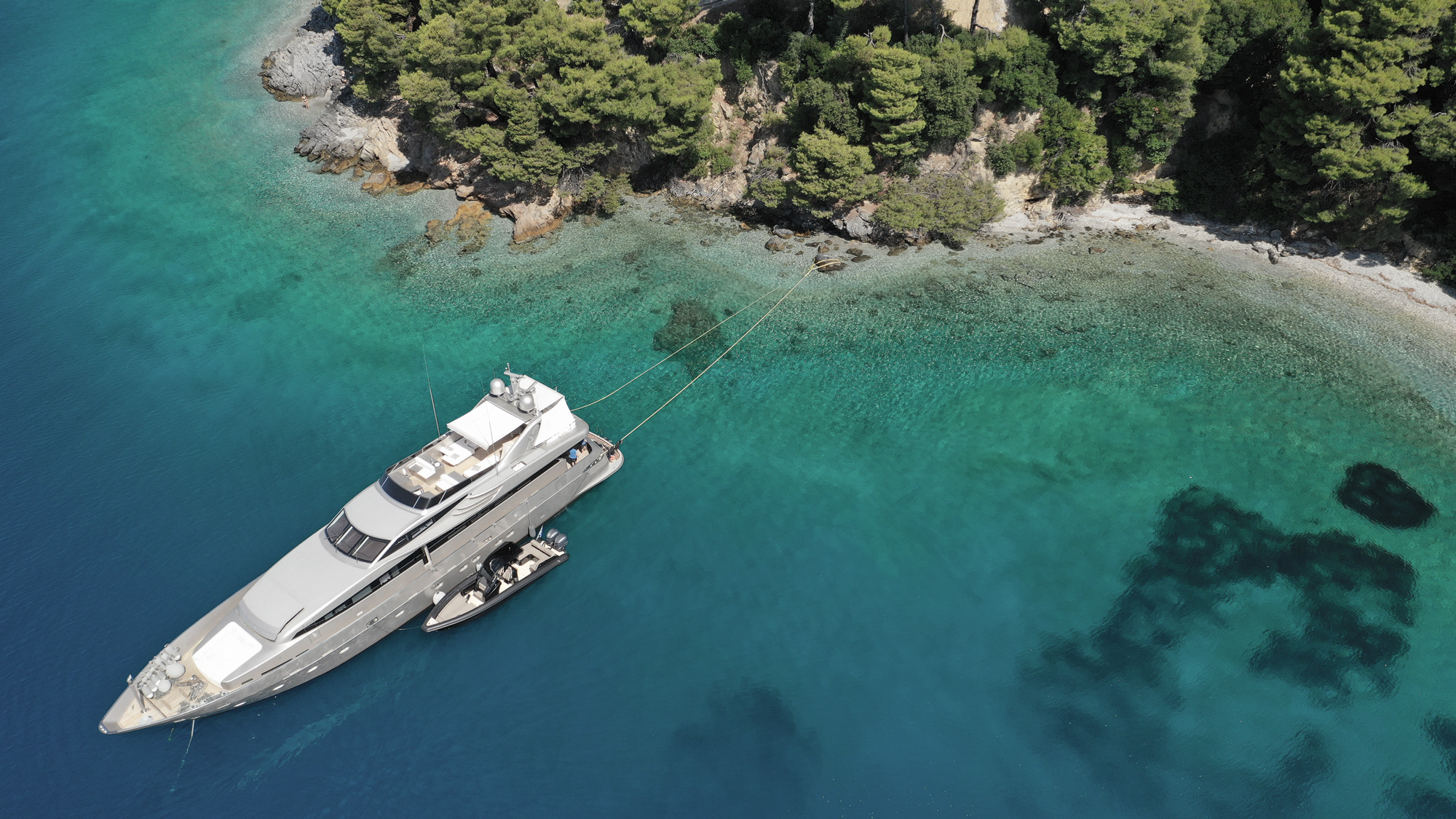Everyone dreams of finding a beautiful lagoon with no one around so they can enjoy themselves in peace. If you want to spend the night in a lagoon, you need to check these few things:
- First you need to check the depth to make sure the water is neither too shallow nor too deep to drop your anchor. It would be good to know what the seabed consists of (sand, rocks, mud, or seaweed). The best option is a sand or mud bottom, because your anchor will hold very well and you will be safe. An issue with rocks is that you may have problems when you have to lift up your anchor if it gets stuck between the rocks. The problem with seaweed is that the anchor will not hold very well and the anchor might drag.
- The second thing to consider is how much chain or rope you deploy, depending on the depth. You need to understand that it’s not only the anchor that’s holding your boat, the chain is too, so you have to be sure to release enough of it.
- The amount of chain you need to release is determined by “scope.” Scope is the ratio of the length of the chain released to the depth of the water. A good practice is to drop three times more chain than depth (3-to-1) for a lunch stop, and 5-to-1 for an overnight stop. So, as an example, in water that is 5 meters deep, drop 15 meters of chain for a lunch stop, and 25 meters for an overnight stop.
- Face the boat towards the wind and drop your anchor. When you have released enough chain, go in reverse until the rode or chain pulls tight and the boat is not moving backwards. Again, keep in mind your surroundings (other boats will swing if they are on ONE anchor, but boats that are on a mooring ball and have a stern anchor set will not), and ensure you have plenty of distance between you and any fixed obstruction (rocks, beach, shoreline).
- It’s important to note that the anchor windlass system is not working when your engines are turned off.
- The most important thing is to check the weather forecast in your area. The wind can change direction and speed during the night, so always do this in advance and position your boat depending on the latest weather and wind circumstances.
- If you have some neighbours close to you, ask them how much chain they released to avoid contact when you are all going to swing around.
- Turn on your anchor light, check your position every few hours, and enjoy your night.
- If you are ever in a location where tides become a factor, be sure to include that in your scope calculations, because you will have different depths (high and low tide factors) throughout the night.

